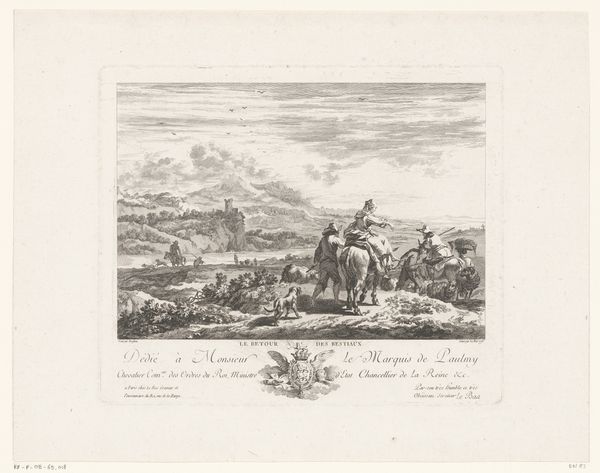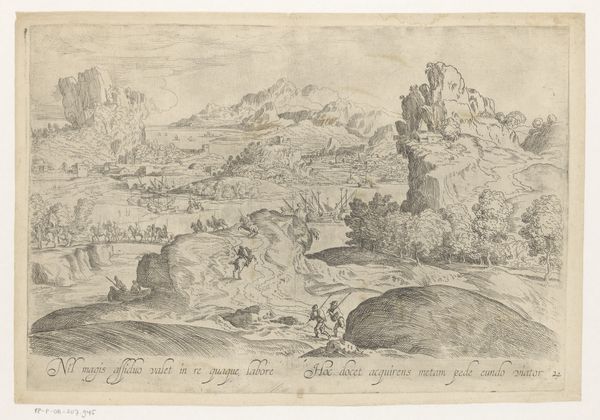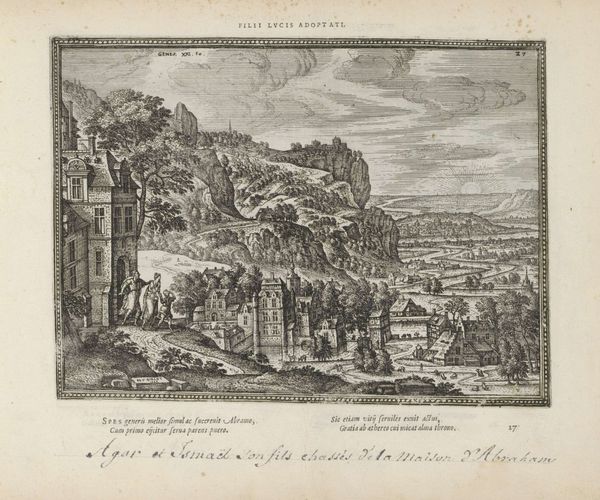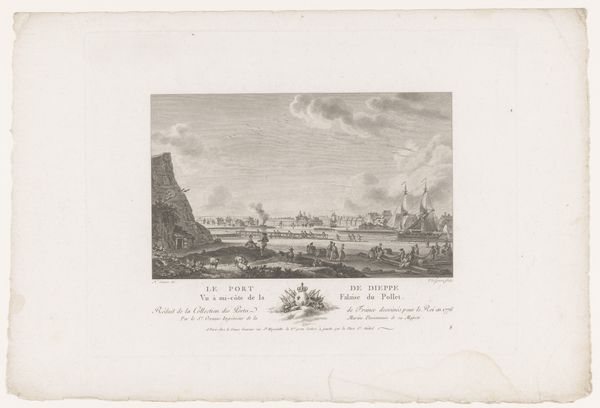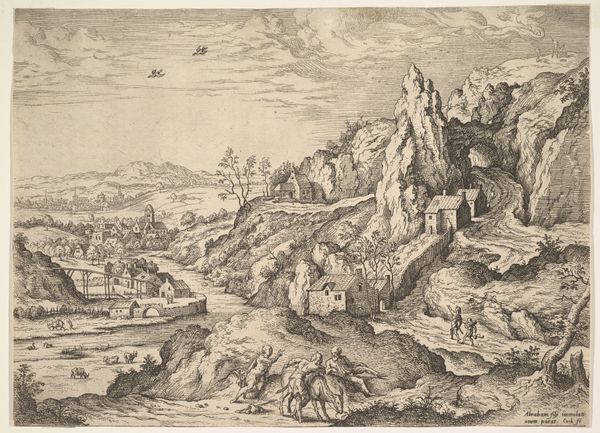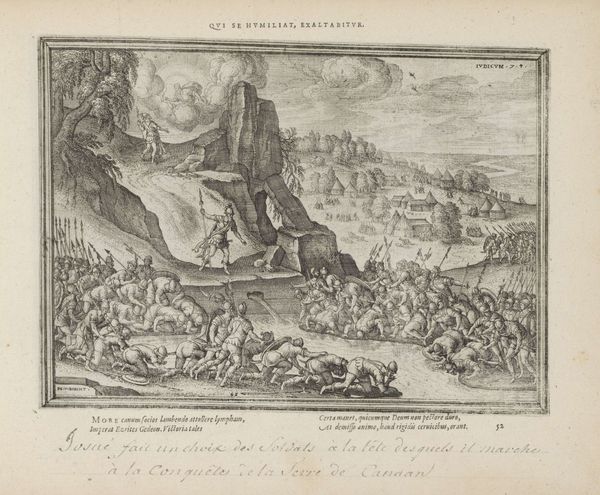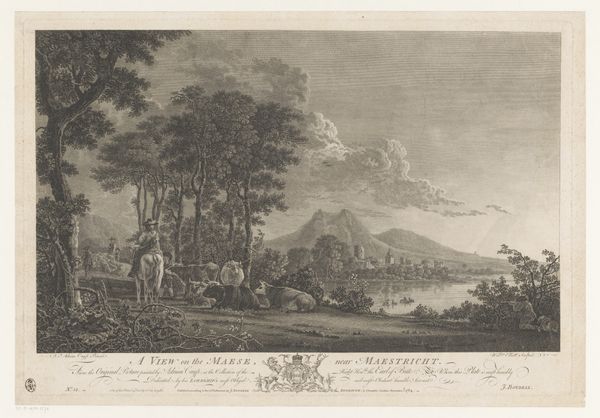
drawing, graphic-art, print, metal, engraving
#
drawing
#
graphic-art
#
baroque
# print
#
metal
#
old engraving style
#
landscape
#
line
#
engraving
Dimensions: height 131 mm, width 171 mm
Copyright: Rijks Museum: Open Domain
Curator: The eye is drawn immediately to the interplay between delicate lines and the grand scale. Editor: Agreed. It's somewhat Romantic, the vastness dwarfing the small boat. An impressive waterfall juxtaposed with this tiny human endeavor. It is an evocative study in contrasts. Curator: Indeed. And let me contextualize this view somewhat. Here we have Pieter Schenk's print, "Gezicht op de Rheinfall, bij Schaffhausen" created around 1694-1697, rendering a stunning vista that would become famous for northern Europeans doing the grand tour. The medium used is engraving. Editor: Schenk employs line to create form; a structural foundation defining the landscape. The diagonal thrust of the composition focuses the eye towards the distance and the grand waterfall with the structure above the bluff that may serve as a metaphor for culture imposing structure and power over nature’s sublime display. Curator: I’m more interested in the emotional impact of the landscape. The rushing falls could represent change, an inexorable move from a familiar world towards the unknown and possibly the chaotic; or simply remind viewers that nothing ever stays still. Note too how the settlement, clinging to the cliffs, seems vulnerable but also enduring. Consider the symbols of resilience that the inhabitants of the period took from nature's ability to renew, replenish, and recreate life in general. The people observing that scene could be transformed spiritually as well as visually by such an intense scene of transformation of energy. Editor: I am curious about your assessment of this natural element and its impact to create an internal transformation of the spirit, especially in relation to humans depicted on the cliff overlooking that landscape. What informs this conclusion about viewers internal states from examining merely form and line? Is this emotional resonance accessible through line, shape, value, and composition or, does one have to imagine that emotional feeling to understand the artist? Curator: Well, think about it: baroque imagery often aims to stir emotions. It wants to inspire awe or convey a sense of drama. The imposing scale of the Rhine Falls makes it almost biblical. Nature here represents not only great sublime beauty, but can destroy with floods and flash fires as well, leading the population of northern Europeans of the time toward more internalized feelings of religiosity and fear about the second coming and so on. Editor: Ah, that’s helpful. A Baroque vision, aiming for affect... but I still think much of the image’s communicative potential rests on its effective composition: on how Schenk leads us from the boat up toward the fortress high up, toward an understanding of the social organization within the culture the artist documents so skillfully in metal engraving. Curator: I see it a little differently then, but our viewpoints certainly underscore the depth and richness of the piece. Editor: Agreed. What a powerful example of metal engraving, showcasing Pieter Schenk's virtuosity.
Comments
No comments
Be the first to comment and join the conversation on the ultimate creative platform.
